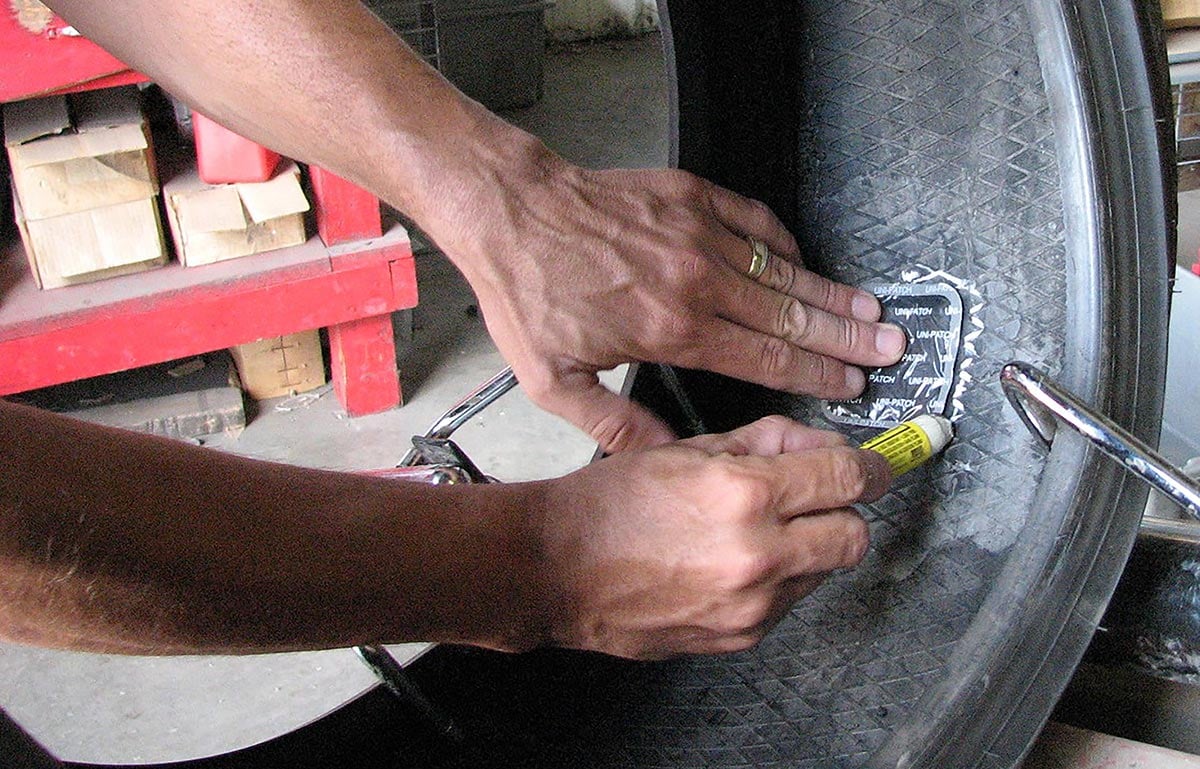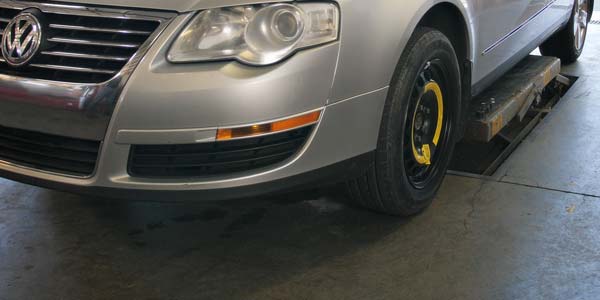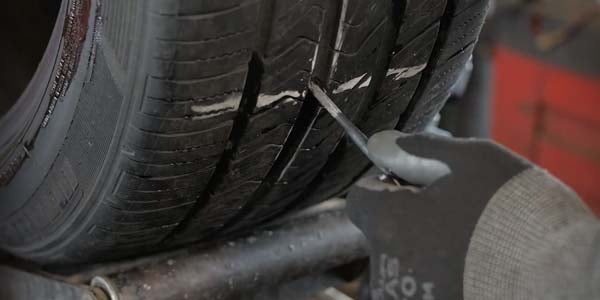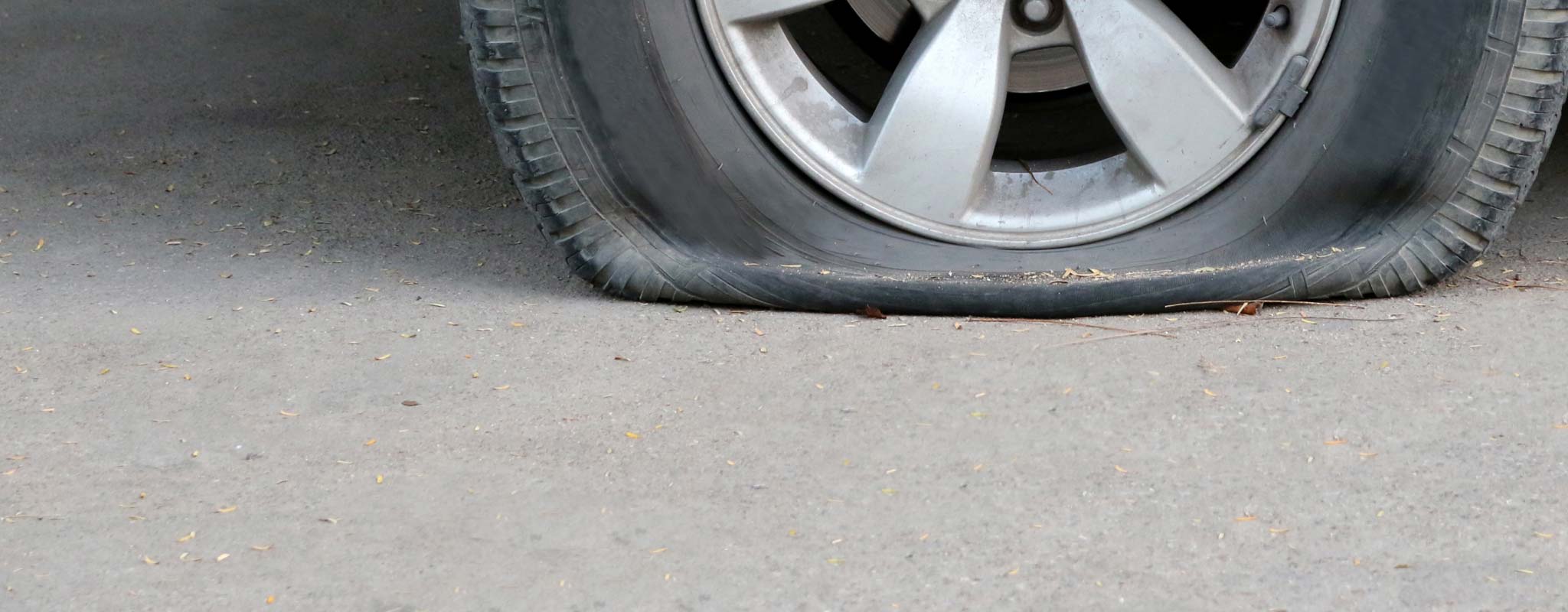When Your Flat Tire May Need to Be Replaced
It’s easy to learn how to change a flat tire and install your spare. What’s not as easy is knowing when your flat tire can’t be repaired or patched, and when it will need to be replaced with a new tire. Here are 8 indicators you may need a new tire.
- The tire has a sudden loss of air and you drive on it flat. This can cause internal damage, which can’t be fixed.
- The sidewall has a puncture, a cut exposing the cord, or a visible bubble or bulge.
- The shoulder has damage (more than cosmetic), such as a small puncture.
- You spot a bulge on the tread or sidewall (following an impact, etc.).
- There’s a gash deep enough to expose the nylon or steel belts (which are part of the internal structural components of the tire).
- The size of the gash or hole in the tread is greater than one-quarter inch.
- The tire has been repaired before and the new damage is close to the previous repair.
- If for any reason the repair exceeds the tire manufacturer’s recommendations.

Underinflated Tires May Damage the Sidewall From Excessive Heat
Tires with low air pressure may be hard to detect while driving. An underinflated tire generates a lot of heat quickly, which may cause the sidewall to break down in seconds. Therefore, an underinflated tire can be damaged beyond repair within a short distance. Simply driving on a severely underinflated tire from the fast lane to the shoulder can cause irreversible damage.
Slow Leaks in the Contact Patch Can Be Repaired
If you have a slow leak from a puncture in the main part of the tread, chances are good the tire can be repaired. Done right, your repaired tire should be safe to drive on for its full tire life. Additionally, the repair may be free (depending on your warranty).
Les Schwab Tip: We do more than just patch tires. Our experts use a multi-step process to ensure your tire is properly repaired.
Basics of Flat Repair
First, the tire technician will identify the location of the leak and make sure there are no others by submerging the tire and wheel in water. Then they’ll take the tire off the wheel (called dismounting), and inspect the inside and outside for structural problems and previous repairs.

If the tire is repairable, they’ll start by buffing the affected area being careful to avoid any damage to the liner. Then they’ll use vulcanizing compound and a one- or two-piece plug patch combination to fill the hole and seal the liner. This method ensures an airtight seal and that the cord material is protected.
Do Emergency Tire Repair Kits Work?
If your vehicle doesn’t have a spare, or you need to get out of an emergency situation, you may be relying on a sealant kit or other quick-fix option when you get a flat. This isn’t a substitute for proper repair.
At Les Schwab, we’ve been cleaning, sealing, and repairing flat tires for a long time. We’ve seen a lot of do-it-yourself options over the decades, but emergency plug kits are not among the best options. The use of a plug kit to fill a hole from the outside of your tire can cause additional, internal damage that may be difficult or impossible to repair. Additionally, some aerosol sprays can damage the TPMS sensor in your wheel, which can be expensive.
Bring Your Flat Tires to Les Schwab
If you’re driving on a set of Les Schwab tires, we’ll fix your flat for free. If the tire cannot be repaired, we’ll show you all of your options and get you back on the road safely.
Schedule a Flat Repair
What you need to know

Run-Flat Tires: How They Work & When Should You Use Them
Discover how run-flat tires work, when you should use them, and why some carmakers are adding this relatively new technology to their vehicles.

Les Schwab Tech Tip: How Flat Tire Repair Works
Learn how flat tire repair works from the experts at Les Schwab, home of the Best Tire Value Promise.

Why the Combination of a Tire Plug and Patch Is Needed for Tire Repair
Thinking about giving that flat tire a quick fix? A plug or patch isn't always the best option. Learn what other options are suitable for your tire repair.

